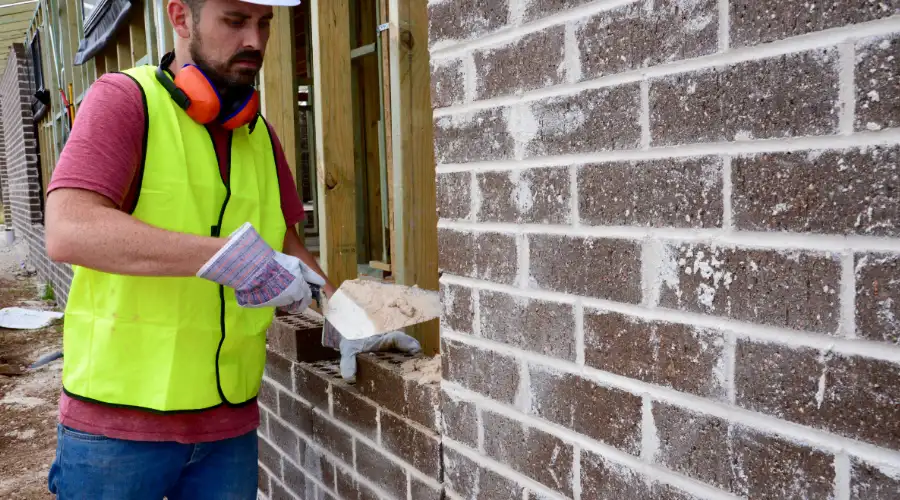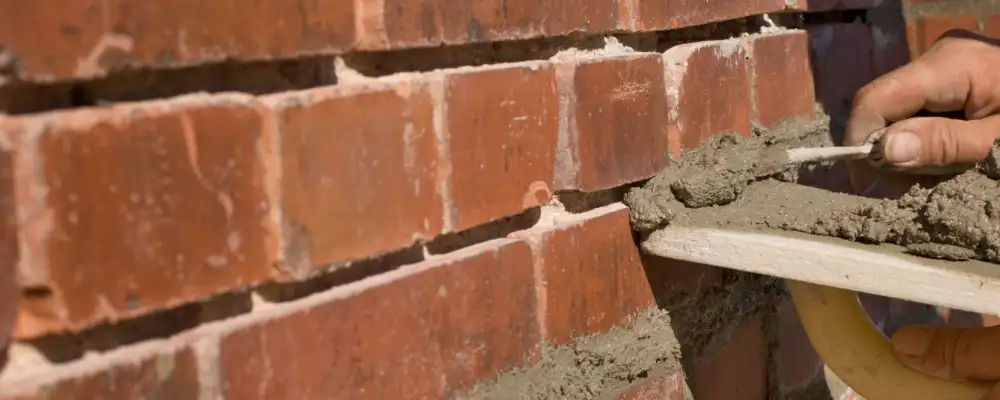Pointing is a necessary activity in construction that adds both strength and aesthetic quality to brick masonry work. There are various pointing techniques, but beaded pointing is one of the most popular ones. You may want to consider beaded pointing to enhance the strength and integrity of your masonry projects. This blog will break down all aspects of beaded pointing, including what it is, how to do ‘bead’ pointing, where to use it, and what the benefits of beaded pointing are. It will help you assess whether you’re going to use beaded pointing on your next project, whether you’re a do-it-yourself homeowner, a builder, or involved with a masonry contractor.
What is Beaded Pointing?
Beaded pointing is a technique in masonry in which mortar joints are molded into a rounded edge at the face of the wall. This rounding increases the durability of brickwork since the mortar joints—which are historically and commonly an entry point for water intrusion— can more effectively divert rainwater right away. In the case of beaded pointing, the mortar bead along joints will help deflect rainwater away from the bricks. Thanks to this rounded bead, the structure can prevent moisture damage and also look visually pleasing.
Where Beaded Pointing is Used
Beaded pointing is commonly used in both modern and traditional brickwork. Typically, it is more associated with residential buildings to accentuate a classical or traditional style, as the rounded and smooth finish looks nice. Furthermore, beaded pointing can also be found in commercial buildings in urban environments as a way to protect the facade while addressing weathering in an appealing way. Beaded pointing is also fairly common in restoration and conservation projects in order to replicate the appearance of historic buildings while also providing improved structural integrity and protection from weathering to the masonry.
Tools & Materials Required
To carry out beaded pointing effectively, you’ll need the right tools and material. The tools you will need include a pointing trowel to apply the mortar and a masonry brush for cleaning the brick surfaces before the mortar is applied. The mortar mix is typically a mixture of sand, cement and water. However, lime mortar (mix of lime, aggregates and water) can also be used. Making the mortar using the right ratio is essential to ensure it is workable. A pointing rod is essential to shape the mortar joints into round beads, which gives the brickwork a distinctive appearance. It is also important to have a level or ruler so that the mortar joints are straight and uniformed, and also to have a spray bottle of water to moisten the area prior to application of the mortar, allowing for better adhesion to the brick.
Step-by-Step Process of Beaded Pointing

Here’s a simple, step-by-step guide on how to perform beaded pointing:
- Prepare the Wall: Before you can refill the joints on your brick wall, you must clean the brick wall to remove any old mortar, dirt or debris. This will help the new mortar bond properly.
- Mix the Mortar: Here, you want to make a strong and thick mortar, this can be made of sand, cement/ lime, and water in the right proportions. The key here is that the lime mortar mix is thick enough that once applied, it stays where you put it, but watery enough to ensure good workability.
- Apply the Mortar: To apply the mortar, use a pointing trowel. The mortar should be packed into the joints between the bricks, pressing the mix to fill the joints completely and avoid air voids.
- Shape the Mortar: After applying the mortar and before it cures, use a pointing rod to shape the mortar out into a rounded bead. As you shape the bead, you want to make sure it is smooth and rounded along the length of the bead.
- Smoothen and Clean: After shaping the mortar, use a masonry brush to remove any extra mortar from the bricks and to smooth the surface of the mortar bead you just created.
Benefits of Beaded Pointing
Beaded pointing offers several advantages, making it a popular choice for brickwork:
- Aesthetic Appeal: The rounded, beaded finish of this masonry provides an elegant appearance. The visual appearance of modern and traditional buildings appears more exact and tidy with this beading type.
- Water Resistance: The largest benefit of beaded pointing is how it redirects water away from the bricks. The bead can keep the water from getting to the mortar joints, thereby protecting against water damage and moisture infiltration.
- Easy Maintenance: Beaded pointing is easily maintained compared to other pointing types since it is smooth and dirt and grime do not stick easily allowing for easy cleaning and maintaining over time.
Disadvantages of Beaded Pointing
- Vulnerable to Damage: As beaded pointing projects out from the masonry surface, it can get more easily damaged or chipped than other pointing types.
- Cost: Since it requires intricate work, beaded pointing can be time-consuming and thus more expensive to execute than other types.
- Painting/ Finishing: It can be difficult to paint or apply other finishes to this type of beading as it has a projecting surface.
Cost and Time Involved
The price of beaded pointing can fluctuate depending on various aspects such as overall wall size, level of complexity of the work being completed, and specific materials used. Usually, beaded pointing can cost more than standard pointing methods with the level of labour-involvement as well as specialized tools needed.
The time to complete beaded pointing will also rely on the size of the project – a few days up to a week in most circumstances. Restoration projects would typically take longer. However, proper assessment should be made depending on the area of the wall and how well the mortar joints have held up.
Should you choose to utilize a professional service, leading companies like Brick & Bolt can assure the job will be completed efficiently while providing time savings and high-quality workmanship.
Conclusion
Beaded pointing is a fantastic option for anyone who is looking to enhance the look and longevity of brick or stone masonry. Not only does it produce a uniform, professional finish, but also protects masonry against the weather and moisture. Furthermore, beaded pointing works well for both restoration and on new construction. With the design and protection it offers, beaded pointing is a win-win for you as a brickwork owner.If you are looking for beaded pointing for your masonry project, Brick & Bolt will assist you. We provide professional and experienced pointing work so that your brick looks as good as possible for as long as possible. Get in touch for your masonry service requirements.

